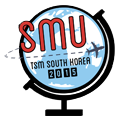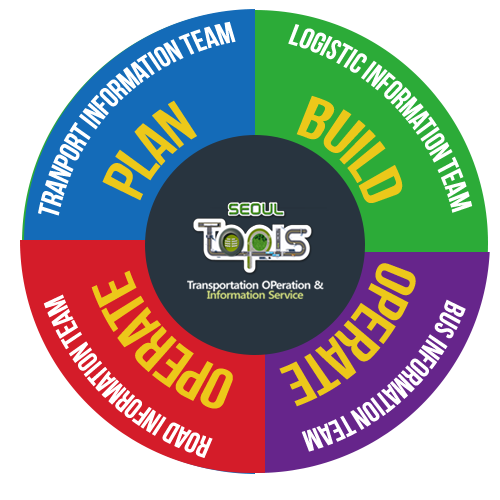Difference between revisions of "1415T2g1 South Korea/Project Teams/Team 3/Companies"
May.koh.2012 (talk | contribs) |
May.koh.2012 (talk | contribs) |
||
| Line 61: | Line 61: | ||
<br/> | <br/> | ||
| − | <div style="background: #025EA1; padding: 15px; font-size: | + | <div style="background: #025EA1; padding: 15px; font-size: 25px; font-weight: bold; line-height: 1.3em; text-indent: 15px; border-left: #0d3963 solid 32px;"><font color="white"> Progress Updates</font></div> |
{| class="wikitable" width=70% | {| class="wikitable" width=70% | ||
|- | |- | ||
| Line 78: | Line 78: | ||
|} | |} | ||
| − | <div style="background: #025EA1; padding: 15px; font-size: | + | <div style="background: #025EA1; padding: 15px; font-size: 25px; font-weight: bold; line-height: 1.3em; text-indent: 15px; border-left: #0d3963 solid 32px;"><font color="white"> Companies</font></div><br/> |
| − | == Company | + | <br/> |
| + | ==<div style="background: #2E3535; padding: 15px; line-height: 1em;font-size:23px;"><font color= "#ffffff" face="impact"> Company </font><font color="#EED82E" face="impact"> Seoul TOPIS</font></div>== | ||
=== About Company === | === About Company === | ||
| + | Seoul TOPIS, an integrated transport information and service system, launched in 2004 to support government officials in shaping sophisticated transport policy through collection and analysis of real-time data. The TOPIS-data based information service helps passengers to better plan their journeys and select the best modes of transportation by flagging congestion areas, giving estimated travel times, and providing bus arrival and waiting times. | ||
| + | |||
| + | TOPIS key functions include data collection and integration, operation and control, information pooling and usage, improved service and information sharing, mitigation of traffic congestion, incident management, using data for policy making, remote enforcement for illegal parking, and bus management. | ||
| + | |||
| + | |||
| + | ===What motivates Seoul TOPIS=== | ||
| + | When public transportation companies in crisis were not able to provide good service for users, more citizens took to the streets in small cars – worsening the situation. As streets become increasingly congested and bus companies continued to suffer, Seoul City decided to transform the bus system into a quasi-public operation | ||
| + | |||
| + | ===Strategy=== | ||
| + | |||
| + | *Transform bus system into a quasi-public operation | ||
| + | *Upgrade system to manage not only buses, but also all other transit-related system (excluding traffic signals) | ||
| + | |||
| + | ===Organization=== | ||
| + | [[File:TOPIS Organization.png|500px|center]] | ||
| + | ===Solution=== | ||
| + | * TOPIS Center manages and gathers information from all public transportation in Seoul | ||
| + | * Center’s success derives from establishing scientific transportation policies based on collected data | ||
| + | |||
| + | ===How it Works=== | ||
| + | Enormous amount of data from road and video sensors, GPS, Taxi cab credit card readers, citizen and driver report, Wi-Fi networks, CCTV and unattended surveillance devices are processed by the Center’s databases. This real-time information is then distributed to citizens via smartphone apps, signboards at the bus stops and a web portal | ||
=== Vision & Mission === | === Vision & Mission === | ||
Revision as of 16:10, 11 February 2015
| About Us | Our Companies | Our Reflection |
| Date | Action |
|---|---|
| 28th Jan 2015 | Sent a request email to Seoul TOPIS |
| 31st Jan 2015 | Sent FB Message to Seoul TOPIS |
| 3rd Feb 2015 | Sent an follow up email and FB Message to Seoul TOPIS |
| 4th Feb 2015 | Confirmed the trip schedule with Seoul TOPIS via FB |
Contents
Company Seoul TOPIS
About Company
Seoul TOPIS, an integrated transport information and service system, launched in 2004 to support government officials in shaping sophisticated transport policy through collection and analysis of real-time data. The TOPIS-data based information service helps passengers to better plan their journeys and select the best modes of transportation by flagging congestion areas, giving estimated travel times, and providing bus arrival and waiting times.
TOPIS key functions include data collection and integration, operation and control, information pooling and usage, improved service and information sharing, mitigation of traffic congestion, incident management, using data for policy making, remote enforcement for illegal parking, and bus management.
What motivates Seoul TOPIS
When public transportation companies in crisis were not able to provide good service for users, more citizens took to the streets in small cars – worsening the situation. As streets become increasingly congested and bus companies continued to suffer, Seoul City decided to transform the bus system into a quasi-public operation
Strategy
- Transform bus system into a quasi-public operation
- Upgrade system to manage not only buses, but also all other transit-related system (excluding traffic signals)
Organization
Solution
- TOPIS Center manages and gathers information from all public transportation in Seoul
- Center’s success derives from establishing scientific transportation policies based on collected data
How it Works
Enormous amount of data from road and video sensors, GPS, Taxi cab credit card readers, citizen and driver report, Wi-Fi networks, CCTV and unattended surveillance devices are processed by the Center’s databases. This real-time information is then distributed to citizens via smartphone apps, signboards at the bus stops and a web portal
Vision & Mission
Learning Points
References
P.S <insert more sections based on the research>

